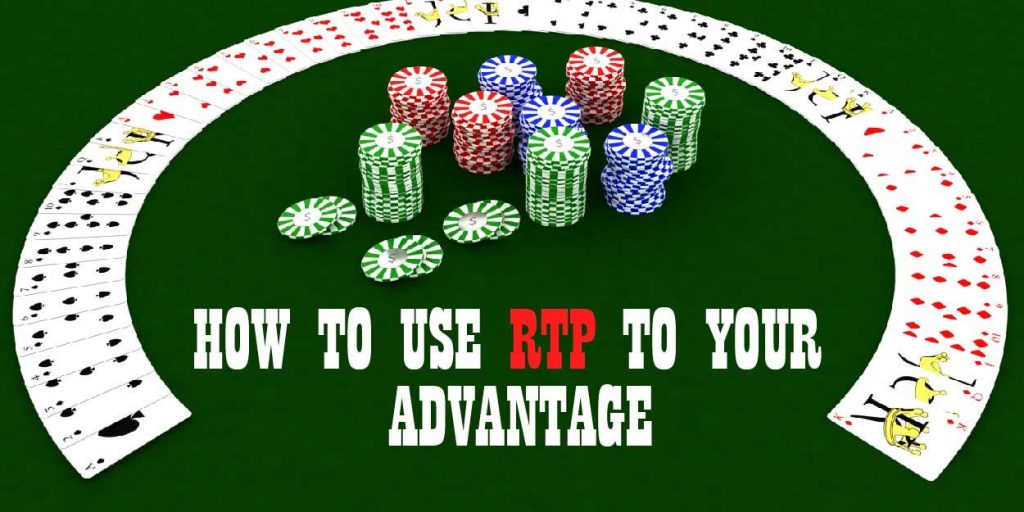The return to player (RTP) percentage provides slot and casino game players with the opportunity to win back some or all of the money they bet, regardless of whether they play in an actual casino or an online casino. When you have a solid grasp of how the RTP operates, you will not only have a better chance of seeing your financial investment rewarded in the form of wins, but you will also be in a better position to make financial decisions.
RTP, or return to player, provides slot players who play the game frequently with a better chance of getting more money back for the money they wager. While random number generators (RNGs) ensure that you have at least a moderate chance of winning with each spin, return-to-player percentages (RTPs) guarantee that the machine is designed to pay out a predetermined amount of the total amount wagered, regardless of whether the money is won by you or another player. Read on to learn more about RTP—how it operates, how to calculate it, and how to use it to your advantage.
What is Return to Player (RTP)?

RTP is typically used to determine the payback that will be given to a player throughout a length of time, most frequently each month of a calendar year. The RTP can be described using percentages, and an approximation of the victories can be provided using those percentages. The amount of money that you can win grows in direct proportion to the size of the bets you place.
Every single slot game available at a casino has a unique return-to-player rate. This is true regardless of the casino. The return-to-player percentages, or RTP, that casinos can put into their slot machines can range from as low as 80% to as high as 98%. Over time, a slot machine will pay back users for the RTP percentage that has been allocated to that particular device.
How is RTP calculated?
The return to player (RTP) percentage is determined after a significant amount of time has passed, and the calculation takes into consideration every wager that has been made on a specific game. The quantity of money that is given back to participants as winnings is factored into the computation along with the total number of wagers that were made.
The return to player (RTP) is frequently presented in the form of a number, and it is essential to keep in mind that this value is a speculative estimation that is arrived at after being computed over a considerable amount of time. Because the actual return to the player is determined by the individual player’s outcomes, the RTP rate may or may not accurately reflect the actual return that is made to the player in practice.
RTP can be determined by following this straightforward formula:
You can calculate the RTP percentage by taking the ratio of “total money refunded to players” to “total money wagered by players.”
RTP% = (total money returned to players) / (total money bet by players)
The two parameters that make up this formula can be understood this way: The quantity of money that players have wagered on a game is equal to the sum of each original bet that has been made on it during the period that the RTP audit takes place, which is typically one calendar month. The net amount of money returned to players overall during the same time period serves as a measure of all player victories in the game.
Although RTP values are most commonly associated with slot games, this formula can be used to calculate the RTP value of any casino game, including table games, live casinos, and virtual sports. While RTP values are most commonly associated with slot games, this formula can also be used to calculate the RTP value of other types of games.
A straightforward method for referring to RTP values from the viewpoint of the player is to think of the percentage as representing the amount of cash you would earn if you placed €100 worth of wagers on the game. In this respect, it is the opposite of the house edge, which measures the margin of profit the house is anticipated to earn on any particular game.
In an RTP audit, if participants wagered €150,000 and earned €144,000, the RTP value would be 96%:
144,000 x 150,000 = 0.96, or an RTP value of 96%.
Therefore, RTP equals 96%.
For every €100 bet on the event, you should earn €96.
You can calculate your own gambling game session RTP rate. The RTP rate for a casino game where you wagered €200 and earned €168 is 84%.
84% RTP: 168/200 = 0.84
Is RTP different from game volatility?

Another misconception in the online casino world is regarding RTP and volatility. Although players frequently get it confused with volatility (variance), the two are not the same thing at all. The RTP does not inform participants how frequently they can anticipate winning. The variance is responsible for the fact that winning combos appear at a variety of frequencies.
To begin, the volatility of a slot machine, also known as its variance, indicates how frequently it is likely to strike a winning combo. There are three distinct varieties:
Low volatility, meaning that it gives out frequently but in lesser quantities.
Medium volatility entails varying profits, with some being relatively modest and others significantly larger.
High risk: activities with a high risk of losing all of their money have a much smaller likelihood of paying out, but when they do, the payouts are much larger.
The return to player percentage (RTP) and the variance of a gambling game work hand in hand to provide you with an accurate picture of the player returns that can be anticipated from that game. Determine how long your money will last by looking at the variation. Check the RTP to find out what you can anticipate; if it’s high and combined with low volatility, you can anticipate good profits from your bets.
Slot machines with low variance and a return-to-player percentage of 96% give out more frequently but with lesser prizes. Slot machines with a high variance and a return-to-player percentage of 96.50% can pay out large amounts, but you should be prepared for losing streaks.
It is completely up to your personal taste. Slot machines that have a low variance and an RTP that is close to 96% are ideal for casual gamers who are searching for more frequent winning combinations. Slot games with an RTP of approximately 96% are the sweet spot for players looking for a low-volatility option. High rollers will likely be searching for slot games with higher RTPs.
Are there good and bad RTP values?
The RTP ratings of various sites and games can vary widely from one another. The rule of thumb is that they are typically lower at physical casinos, where RTP values of 80–90% are typical than they are at online casinos, which frequently feature RTP values that are typically between 90% and 97%.
Because of this, determining whether a game has a “good” or “bad” RTP value is primarily dependent on your judgment and whether or not you believe the RTP value at issue supports making wagers on the game.
How does RTP affect your gameplay?
In the long run, if you play a game that has a higher return-to-player (RTP) rate, you may have a better chance of winning. This is particularly important if you intend to play for a prolonged period. In most cases, the RTP percentage is the most important factor that will be considered when determining the overall standard of these casino games. Only certain players may enjoy a slot game that has excellent visuals but a poor return-to-player rate. As a result, you need to know the aforementioned information before you can even think about participating in these activities.
How to use RTP to your advantage

You can use your knowledge of RTP to your benefit if you are familiar with the RTP rate of the casino game you are playing. The following are some pointers that will help you make the most of RTP:
- Look for games with high rates of return to player (RTP). It’s essential to seek out games that have high RTP rates because games with high RTP rates generally have higher chances of winning.
- Study the rules and the paytable: It is important that you understand each game’s rules and paytable, as this will provide you with information on the return to player percentage (RTP rate).
- Pick games with advantageous rates of return on investment (RTP): If you want to improve your odds of coming out on top, one of the most essential considerations you should make when selecting a game is the RTP rate.
Bottom Line
The last thing we want to say is that regardless of the game you choose to play, it is important to keep an eye out for the RTP. Before you start playing a game, it is a good idea to do some research on the RTP percentage of the game. Look for online casinos that display the RTP percentages for each game they offer. In truth, this material ought to be available to the public anyway. Independent of any other factor, the transparency with which a casino presents its RTP numbers is a good indicator of the establishment’s reliability.




































